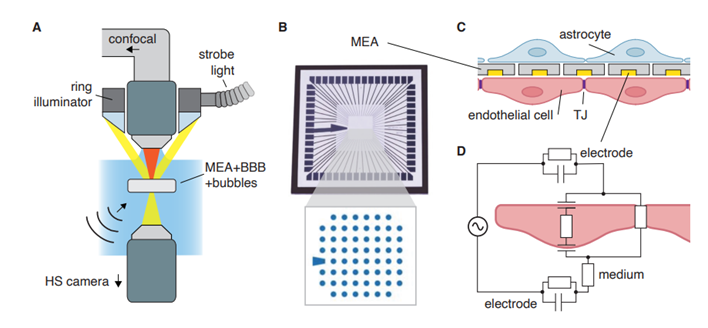The presence of the highly selective, semipermeable blood-brain barrier (BBB) is the main obstacle to the delivery of therapeutics to the central nervous system (CNS). The available drug delivery methods to treat brain diseases lack specificity or are invasive and unreliable. A novel method to deliver drugs to the BBB employs gas-filled microbubbles (MB) driven into oscillation by focused ultrasound (FUS). This novel approach is promising as it is non-invasive, transient, and tunable, allowing localized drug delivery that can be monitored through the received bubble echoes. Although the technique's potential is already demonstrated in clinical trials, the exact mechanisms by which the oscillating MBs open the BBB remain unclear. This knowledge gap limits standardization and thereby clinical translation of BBB permeabilization using microbubbles.

In this Master’s thesis project, we aim to correlate the ultrasound-driven MBs oscillations to their (bio) effect on endothelial cells. To this end, the student will develop a novel multi-electrode system to resolve spatiotemporally the trans-endothelial resistance (TEER) of a model BBB during and after ultrasound-driven microbubble oscillations. The main goal is to get the first proof of concept data and a TEER map around an oscillating bubble over time. If all goes well, the student will explore biological responses depending on different US parameters such as frequency, acoustic pressure, and pulse duration. Next to TEER measurements, the student will learn to master experimental methods including ultra-high-speed imaging at 10 million frames per second, electrical data acquisition and data processing, image processing, and cell culture.
Contact person: Tim Segers (t.j.segers@utwente.nl)
